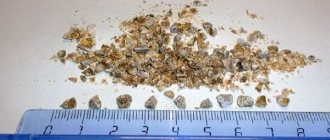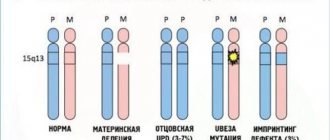Tetanus disease
Tetanus belongs to the group of neuroinfections. This disease can affect not only humans, but also all warm-blooded animals. Most often, signs of tetanus are found in residents of rural areas. This is due to the fact that the infectious agent can remain in the soil for a long time.
The disease is not transmitted through ordinary contact with a carrier of the bacterium. In order for a person to become infected, the pathogen must come into contact with the wound surface.
It is not the microorganism itself that is dangerous to humans, but its metabolic products, because they contain a powerful biological poison that affects the nervous system: first the peripheral and then the central. The toxin is safe if swallowed, as it is not able to be absorbed through the mucous membrane. It is destroyed when:
- exposure to an alkaline environment,
- sunlight
- when heated.
Tetanus: what kind of disease is it?
Woman in a mask with a syringe
Tetanus is an acute infectious disease that is life-threatening and characterized by a complex of various clinical manifestations. Timely medical care and qualified treatment can save a person’s life, if the diagnosis is made correctly and the patient does not hesitate to contact specialists.
That is why everyone should know the symptoms of tetanus in the early stages in order to react in time and not die from the infection.
Tetanus is a zoonotic disease that affects both animals and humans. The causative agent of the infection is a virus that can be found in soil, animal feces, and dust particles. The virus is very resistant to environmental factors, it is resistant to high and low temperatures and disinfectants.
Causes
Tetanus is caused by Clostridium tetani spores entering a wound. In the absence of oxygen, they transform into active forms. The bacterium itself is harmless. But it produces the strongest biological poison - tetanus toxin, which is second only to botulinum toxin in its toxic effect.
Routes of infection with tetanus:
- puncture, cut or laceration wounds;
- splinters, skin abrasions;
- burns/frostbite;
- fractures and animal bites;
- umbilical wound in newborns.
People who need frequent injections are also at greater risk. Any wound (including bites and burns) increases the risk of contracting tetanus.
The most common causes of death from tetanus are:
- choking as a result of prolonged spasm of the vocal cords or respiratory muscles;
- heart failure;
- spine fracture;
- pain shock.
In children, tetanus is complicated by pneumonia, and at a later date by indigestion and anemia.
The disease tetanus develops exclusively when the microorganism gets on the wound surface.
Symptoms of tetanus in humans and photos
There are 4 periods during the disease:
- Incubation.
- Start.
- The height of
- Recovery.
In the photo the man has tetanus
On average, the incubation period lasts about 2 weeks. The start time for this classification is 2 days. During this period, the main symptoms of tetanus are: pain at the site of penetration of clostridia. The wound in this place, as a rule, has already healed. Then trismus appears - a spasm of the masticatory muscles. The jaws are clenched convulsively, so that not all patients can open their mouths.
During the height of the disease, symptoms of skeletal muscle irritation appear. Muscle hypertonicity is accompanied by severe pain. Extensor reflexes predominate, which is manifested by stiffness of the neck muscles, throwing the head back, hyperextension of the spine (opisthonus), and straightening of the limbs. Hypertonicity of the muscles involved in breathing leads to hypoxia.
Symptoms of tetanus in humans:
- spasm of the masticatory muscles (difficulty opening the mouth);
- spasms of the facial muscles (a “sardonic” smile appears, the lips are stretched, their corners are lowered, the forehead is wrinkled);
- Due to spasm of the pharyngeal muscles, swallowing is impaired;
- convulsions that cover all the muscles of the body in a downward direction (a person arches, standing on his heels and the back of his head - opisthotonus). Painful cramps occur even with minor irritation;
- seizures occur in response to any irritating factor (light, sound, noise).
At an early stage, tetanus has symptoms similar to many diseases, for example, gingivitis and inflammation of the mandibular joints. Indeed, during the development of tetanus bacillus in the body, the masticatory muscles are in constant tension and sometimes twitch. Gradually, the infection begins to resemble epilepsy and a severe hysterical attack.
The action of the pathogen, as we have already noted, occurs extremely quickly; moreover, the first symptoms of tetanus in humans are observed within a few hours from the moment it enters the body.
The waste products of infection are not absorbed through the mucous membrane, which determines their absolute safety when swallowed; in addition, exposure to ultraviolet radiation and heating leads to a very rapid death of pathogens.
It is worth noting that the most dangerous period of tetanus is considered to be from the 10th to the 14th day of the disease. It is at this time that the patient experiences rapid metabolism, metabolic acidosis and increased sweating. A cough begins and it is sometimes very difficult for the patient to clear his throat. In addition to all this, convulsive attacks may occur during coughing and swallowing.
Etiology
Tetanus is caused by microorganisms belonging to the Bacillaceae family. These bacteria can reproduce quite normally in the intestines of humans and animals, but if they penetrate the wound and the oxygen supply to them is cut off, they become aggressive and produce a specific, deadly toxin. It acts very quickly - symptoms of tetanus in humans appear several hours after infection. With a rapid progression, even a tetanus injection is not effective and the person dies.
The main routes of entry of infectious agents into the human body:
- puncture wounds;
- cut or gunshot wounds;
- animal bite.
The first signs of tetanus in adults
Adults have immunity against infection due to vaccination. To maintain the required concentration of protective antibodies in the blood, revaccination is required every 10 years. In the absence of natural protection, adults, like children, develop acute symptoms:
- its earliest sign may appear - dull nagging pain in the area where the infection has penetrated through the damaged skin;
- tension and convulsive contraction of the masticatory muscles, which leads to difficulty opening the mouth;
- difficult and painful swallowing caused by convulsive spasm of the pharyngeal muscles.
Symptoms.
The incubation period is from three days to three weeks; the longer it is, the more favorable the outcome. The first symptom of the disease in people is trismus - tension and convulsive contraction of the masticatory muscles, preventing the mouth from opening. Unusual restlessness, irritability, neck stiffness, soreness in the chewing muscles and other muscles, and changes in gait may be warning signs of illness. Later, rigidity (tension) of the neck and back muscles develops, difficulty opening the mouth increases, profuse sweat appears, muscle tension in the limbs increases and joint mobility is limited. In severe cases, the teeth are tightly clenched and it is impossible to open the mouth. Convulsive contractions of the facial muscles give the patient a peculiar expression - simultaneously smiling and crying; a frozen sardonic smile remains on the patient’s face. Tormenting cramps cover large muscle groups and in severe cases are repeated almost continuously. Due to the prevailing tension of individual muscle groups, the patient’s body can take bizarre poses: sometimes, due to a strong spasm of the muscles of the neck and back, the patient’s head is thrown back and he is arched. Consciousness remains clear. The mortality rate exceeds 50%, and in newborns it is even higher.
How does the disease progress in children?
Infection of newborns with tetanus occurs mainly during childbirth outside a medical institution, when they are delivered by people who do not have a medical education, in unsanitary conditions, and the umbilical cord is tied with unsterile objects (cut with dirty scissors, a knife, and tied with ordinary untreated threads). The incubation period is short, 3-8 days, in all cases a generalized severe or very severe form develops.
Tetanus most often occurs in children between the ages of three and seven years. Mostly this disease has a summer seasonality and affects rural residents more.
There are certain symptoms that appear when tetanus is fully developed. The child has:
- the muscles of the legs, arms and torso are under severe tension;
- they do not relax even during sleep;
- the contours of the muscles begin to emerge, especially in boys;
- after three to four days, the muscles of the abdominal wall harden, the lower limbs spend a large amount of time in an extended position, and their movement is limited;
- breathing becomes interrupted and quickens;
- swallowing becomes difficult, causing pain when breathing.
If parents promptly show medical workers a child who has tetanus, treatment occurs gradually and the symptoms of this disease disappear over time. The duration of this stage reaches 2 months.
Throughout this period, the child is at high risk of developing a variety of complications. In this regard, constant monitoring of its condition is required.
Diphtheria
How do they get infected?
Mainly by airborne droplets. For example, if someone sneezed nearby, or after close contact with an infected person.
The incubation period for diphtheria is three to seven days.
Symptoms
- gray plaque in the throat and tonsils,
- pain when swallowing,
- hoarseness of voice,
- enlarged lymph nodes in the neck,
- labored breathing,
- chills and fever.
Just 100 years ago, diphtheria was the leading cause of death in children under five. Mass vaccination against diphtheria began in the 1960s. After this, the incidence rate decreased and the vaccination campaign slowed down. As a result, a slow increase in the number of cases began again, which ended in an epidemic: on average, 25 people per 100 thousand people were sick. In the 1990s, about 200 thousand people suffered from diphtheria in the countries of the former USSR, and more than six thousand people died.
Stages of the disease
As with any infectious process, the clinical picture of tetanus consists of several successive periods. The following stages of disease development are distinguished:
| Stages of tetanus | Description and symptoms |
| Lightweight | Last no more than 21 days. Characterized by moderate spasms of the facial and back muscles. Clonic-tonic convulsions may be completely absent. The temperature may remain within normal limits or be slightly elevated. |
| Average | The moderate degree of the disease manifests itself in the progression of muscle damage with typical signs, tachycardia and a strong increase in body temperature. The frequency of seizures is no more than one to two times per hour, and their duration is no more than half a minute. |
| Heavy | Symptoms: convulsions are frequent and quite intense, a characteristic facial expression appears. |
| Extremely heavy | A particularly severe course is encephalitic tetanus (Brunner) with damage to the medulla oblongata and upper parts of the spinal cord (cardiovascular, respiratory centers), neonatal tetanus and gynecological tetanus. |
Possible complications
The prognosis of tetanus depends on the form of the course, which is more severe the shorter the incubation period and the faster the development of clinical symptoms. Severe and fulminant forms of tetanus are characterized by an unfavorable prognosis; if timely assistance is not provided, death is possible. Mild forms of tetanus can be successfully treated with proper therapy.
Any serious illness leaves its traces and tetanus is no exception. Because of this, the following complications arise:
- Sepsis;
- Ruptures of muscle tissue and ligaments;
- Fractures;
- Inflammation of the lungs and bronchus.
Tetanus
How do they get infected?
Tetanus is contracted through abrasions, splinters and cuts. The causative agent of tetanus lives in soil and water. It is resistant to disinfectants and high temperatures. Tetanus is often contracted at the dacha, for example, while working in the garden.
The injury does not need to be serious; a small deep puncture of the skin is sufficient. This happens when you step on a nail.
Symptoms
Most often, tetanus manifests itself with the following symptoms:
- cramps and tension in the jaws,
- neck muscle tension,
- difficulty swallowing,
- abdominal muscle tension,
- painful spasms affecting the whole body, which are provoked by a loud sound, bright light, or touching the patient. Such convulsions are called opisthotonus.
General infectious symptoms of tetanus may also occur:
- fever,
- increased sweating,
- high blood pressure,
- cardiopalmus.
“The microbe enters the wound. A toxin begins to be released, which causes muscle spasm. The patient experiences involuntary muscle contraction. Sometimes to such an extent that bones break, a person cannot do anything about it. The treatment is extremely difficult, and the mortality rate reaches 50%,” explains Svetlana Fedunova, chief physician of children’s clinic No. 3.
The incubation period for tetanus is 21 days. Typically, symptoms of the disease appear in the first 10 days. The shorter the incubation period, the more severe the disease.
Diagnostics
Tetanus is a serious infection that can be prevented by vaccination. If the disease does occur, early diagnosis is necessary. The earlier this disease is suspected, the greater the chance of survival the patient has.
Of the laboratory methods, bacteriological diagnostics is acceptable and most relevant, since it is aimed at isolating and identifying the pathogen and detecting its toxin in the test material (microscopy of fingerprint smears, histological examination of tissues).
Treatment of tetanus in humans
Treatment of tetanus should only be carried out in a hospital setting. The main goal is to neutralize and remove the toxin from the body as quickly as possible.
The wound through which the infection occurred is injected with anti-tetanus serum, then it is opened wide and a thorough surgical treatment is carried out. The faster treatment with anti-tetanus serum is carried out, the easier the symptoms of tetanus are tolerated and the fewer consequences the disease has for the body.
Subsequently, preparations containing proteolytic enzymes (Chymotrypsin, Trypsin, etc.) are usually used to heal the wound.
The course of treatment for tetanus includes:
- combating tetanus pathogens in the area of the primary lesion (opening the wound, removing dead skin, sanitation and aeration);
- administration of antitetanus serum; relief of severe cramps;
- maintaining the vital functions of all body systems;
- prevention of complications;
- complete nutrition, rich in vitamins and microelements to strengthen the immune system.
It is desirable that the patient be treated in a separate room, which will eliminate the negative impact of emerging external stimuli on him.
In addition, it is important to have a permanent post for systematic monitoring of the patient’s general condition. If it is not possible to take food on your own, it is administered through the use of a probe.
If a person has had tetanus, he does not develop long-term immunity, and he can become infected with this disease again.
Treatment of tetanus
Treatment of tetanus is an incredibly complex process that is rarely successful. The number of surviving patients over 18 years of age after contracting tetanus does not exceed 20% of all patients. Among children, the mortality rate is even higher - up to 95% of all cases.
Those who manage to survive tetanus do not gain immunity. This is due to the fact that the amount of tetanus bacillus toxin that allows the carrier to survive is not enough to form stable immunity.
The patient is primarily assisted by a resuscitator and anesthesiologist, because it is necessary to minimize pain. When promptly contacting doctors, the patient receives anti-tetanus serum. If there is time to conduct a sensitivity test to the reagent, a specific immunoglobulin is administered.
It is rarely possible to do without drugs. The patient requires doses of muscle relaxants, as well as neuroleptics and sedatives. The patient is fed through a tube. And in especially severe cases, when the esophageal sphincter and its muscles do not allow this, the body is supported with the help of IVs.
Particular attention is paid to the entrance gate. If it is known through which wound the infection occurred, it is injected with anti-tetanus serum. If surgical treatment is necessary, several wide incisions can be made.









